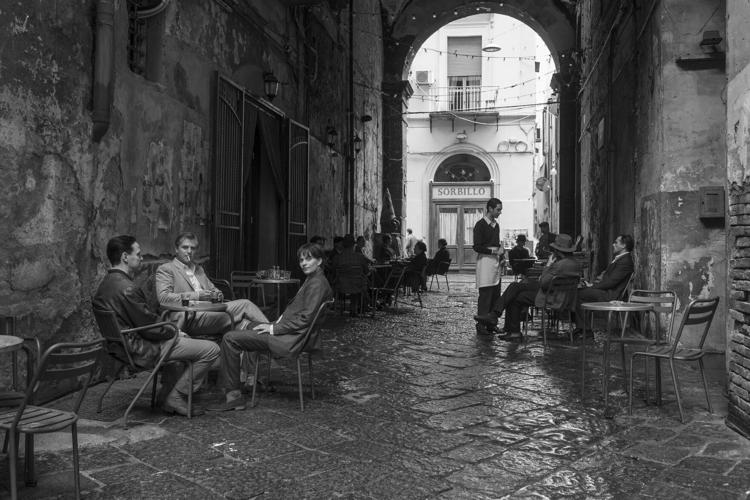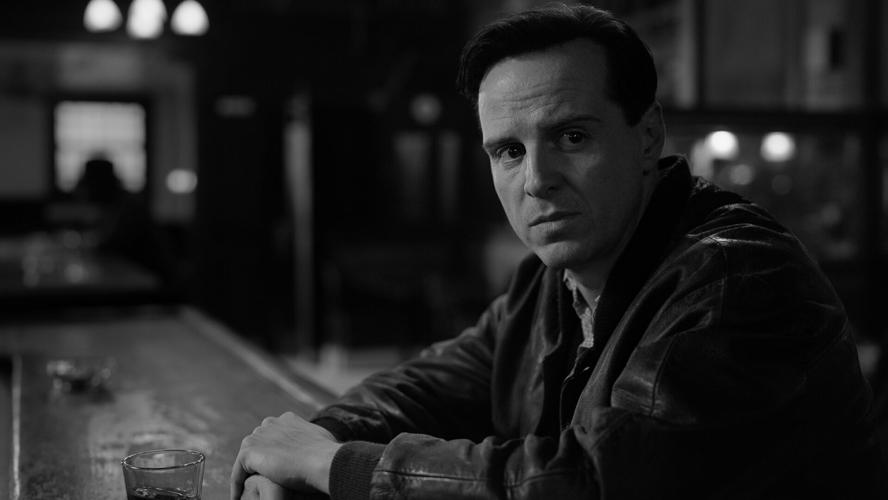The first – and last – thing that strikes you about “Ripley” is the cinematography. Shot in crisp black-and-white, it’s like a photo book from the 1950s, a guide to a time and place that seem oh-so-long ago.
The look immediately sets a tone that never wavers, never betrays the noir attitude writer/director Steve Zaillian has concocted. Once the story takes hold, it’s a co-conspirator, helping wring nuance from the characters’ moves.
Andrew Scott stars as Tom Ripley, a drifter (circa 1961), who’s hired by a wealthy New Yorker to bring his son back from a dalliance with Italy. When he encounters Dickie Greenleaf (Johnny Flynn), Ripley realizes it won’t be as easy as he thought. Greenleaf and his girlfriend, Marge, (Dakota Fanning) are determined to stay, paint dreadful pictures and lounge in luxury.

Andrew Scott stars as Tom Ripley in "Ripley," a new eight-part series.
Inserting himself in their lives, Ripley extracts a level of trust and soon he’s part of the scene, able to pull off what Dickie’s father wants.
But, one wonders, is it what Ripley wants?
In measured scenes, Zaillian shows the growing attraction Ripley has to the man and his lifestyle. He, too, would like to loll in Italy and ignore others’ demands. Like the harsh realities Ripley faces, Robert Elswit’s cinematography reminds us there are two worlds.
As Ripley creates a wedge between Dickie and Marge, the game is just a matter of playing the right cards. Or is it?
Like Alfred Hitchcock, Zaillian introduces moments that could shake the gameplan. Ripley, however, plays like Joe Goldberg in “You” and presses on.

From left, Andrew Scott as Tom Ripley, Johnny Flynn as Dickie Greenleaf and Eliot Sumner as Freddie Miles in "Ripley."
While Patricia Highsmith’s novel, “The Talented Mr. Ripley,” and the film it spawned were engrossing, “Ripley” takes the skill to a different level. Just when you think his inexperience will do him in, the con man finds an out and ambles through.
While Zaillian doesn’t play the homoerotic card Anthony Minghella’s film did (this Dickie insists he’s not gay), he doesn’t stop Scott from playing with furtive glances or subtle gestures.
His biggest threat, of course, is Marge who’s dealing a similar game. She erects her own barrier and tries to undercut Ripley whenever he tries a little too hard. When he offers writing advice, she weakens and soon she’s in the fold.
Scott naturally towers but Fanning is a formidable foe, making Flynn’s Dickie seem more of a catch than he is. When they both fawn over the wealthy friend’s marginal paintings, it’s clear they’re shuffling the same deck.
A fascinating thriller, “Ripley” suggests there are many ways a bestselling novel can be adapted. A technicolor Italy is certainly attractive, but a black-and-white one demands attention. Zaillian doesn’t waste the conceit. He gets high drama from crashing waves and a performance from Scott that embraces more than 50 shades of gray.






